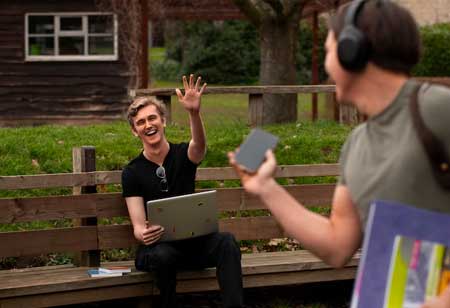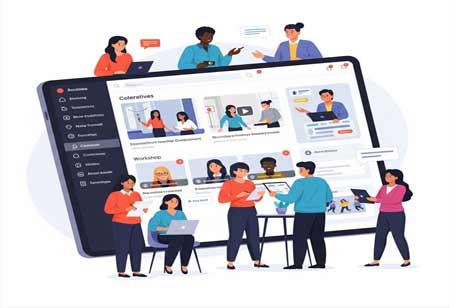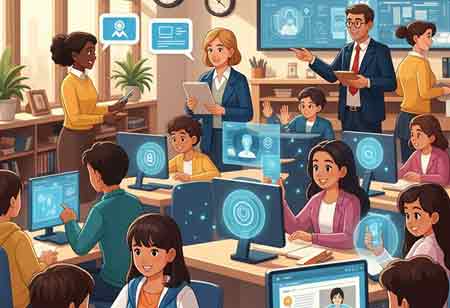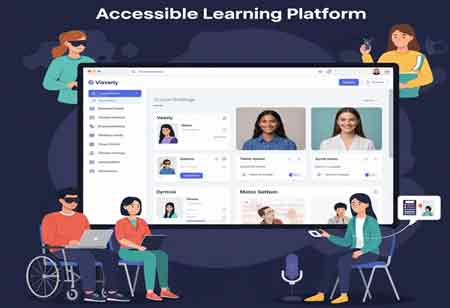THANK YOU FOR SUBSCRIBING
Be first to read the latest tech news, Industry Leader's Insights, and CIO interviews of medium and large enterprises exclusively from Education Technology Insights
Enhancing Project-Based Learning with Digital Tools
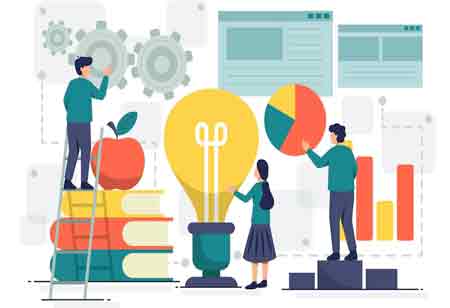
By
Education Technology Insights | Wednesday, September 03, 2025
Stay ahead of the industry with exclusive feature stories on the top companies, expert insights and the latest news delivered straight to your inbox. Subscribe today.
FREMONT, CA: Project-based learning (PBL) is an effective teaching approach that actively engages students in solving real-world challenges. When enhanced by technology, PBL fosters immersive learning experiences that build critical thinking, problem-solving, and collaboration skills essential for success in the modern world.
Elements and Technological Integration in PBL
PBL is an educational approach emphasizing real-world applications and encouraging students to engage with authentic tasks. Key elements of PBL include authentic tasks relevant to students’ lives and interests, designed to mirror real-world challenges. This relevance not only fosters engagement but also makes learning more meaningful. In a PBL environment, students take ownership of their learning and make decisions and choices throughout the project. This student-centered approach empowers learners and encourages independence, critical thinking, and problem-solving. Students are also expected to collaborate, sharing ideas, resources, and responsibilities to achieve a common goal. In addition to critical thinking, students must effectively communicate their findings and processes, honing their written and verbal communication skills.
Technology enhances PBL by providing research, collaboration, creation, and presentation tools. Integrating technology allows students to access various resources and tools that support their learning. Research and information gathering are some of the first steps in a PBL project. Digital libraries and databases such as Google Scholar, JSTOR, and EBSCOhost provide access to academic and peer-reviewed resources, enabling students to conduct in-depth research. Online research tools like Google Search and DuckDuckGo make it easier for students to gather information quickly and efficiently. Furthermore, fact-checking websites such as Snopes and FactCheck.org help ensure the information students collect is accurate and reliable.
Collaboration and communication are vital aspects of PBL, and technology facilitates these processes. Online collaboration platforms like Google Docs, Microsoft Teams, and Slack enable real-time teamwork, allowing students to share documents, ideas, and updates seamlessly. Video conferencing tools such as Zoom, Google Meet, and Microsoft Teams further support virtual meetings and discussions, connecting students across distances. Social media platforms like Twitter or Instagram can also be used to create project-specific accounts, where students can engage with the broader community, share updates, and receive feedback.
The creation and production phase of PBL can be enhanced with various digital content creation tools. Students can use platforms like PowerPoint, Prezi, and Google Slides for multimedia presentations. At the same time, video creation tools such as Adobe Premiere Pro, iMovie, and WeVideo allow students to produce engaging video content. Infographics and visual content can be created with tools like Canva and Piktochart, and interactive websites can be built using platforms such as Wix or Weebly. Additionally, coding and programming can be introduced with languages like Python, JavaScript, or Scratch, enabling students to develop interactive and innovative projects.
Once the project is completed, students can present their work using digital tools. Digital presentation platforms like PowerPoint, Google Slides, Prezi, and Canva allow students to design engaging presentations that capture the essence of their projects. Video conferencing can be used to conduct virtual presentations, enabling students to receive feedback from a wider audience. Creating online portfolios allows students to showcase their work and reflect on their learning journey, building a digital record of their achievements.
To ensure effective implementation of PBL with technology teacher professional development, educators must be trained on both PBL pedagogy and integrating technology into the classroom. Students must also be taught digital literacy, including critical thinking, information literacy, and digital citizenship, to navigate the digital landscape responsibly. Equitable access to technology is crucial, ensuring all students have the tools and internet access necessary for success. Learning environments should be designed to support collaboration, independent research, and project work, allowing for flexibility and adaptability. Authentic assessments, such as peer feedback, self-assessments, and project evaluations, should be used to measure student learning and progress throughout the project.



